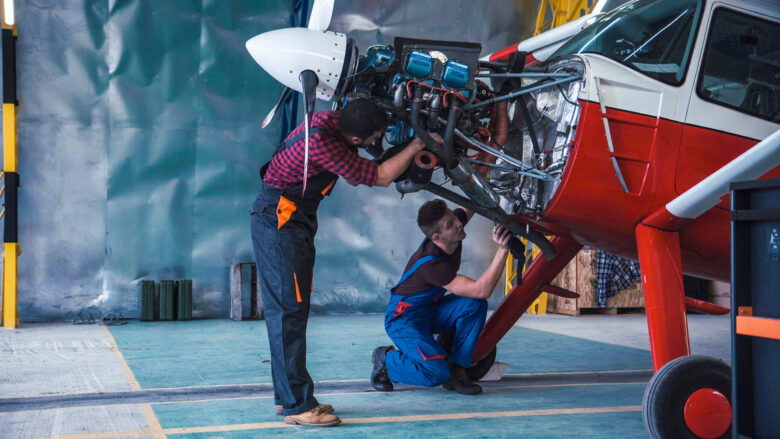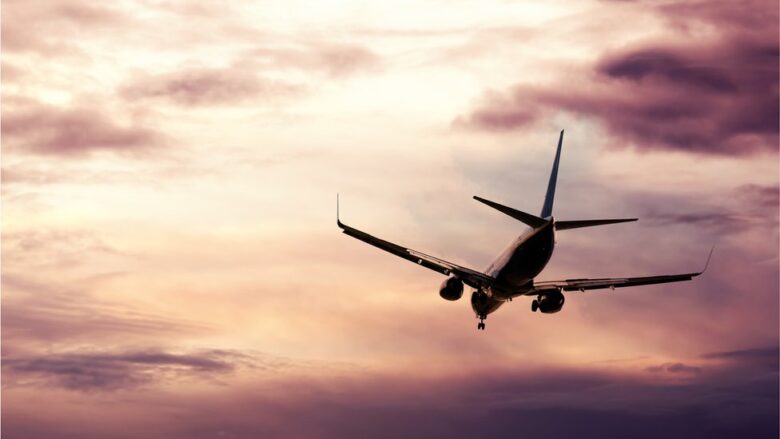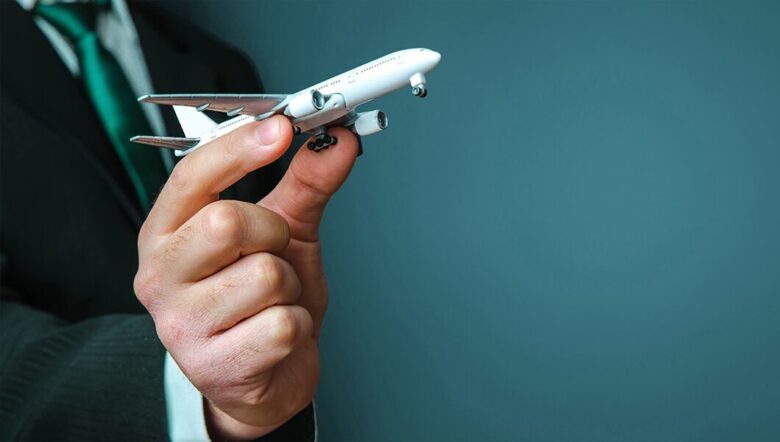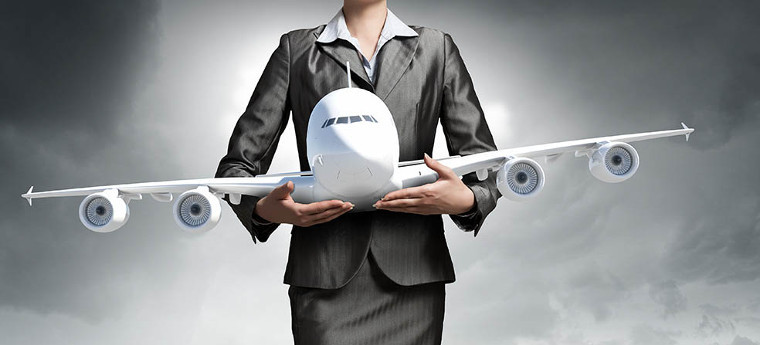Flying in an airplane is a marvel of modern engineering. But have you ever stopped to think about what goes on behind the scenes to keep these machines in the sky? Enter aircraft maintenance—the unsung hero of aviation.
Contents
- The Basics of Aircraft Maintenance
- Types of Aircraft Maintenance
- The Importance of Aircraft Maintenance
- The Ripple Effect of Comprehensive Maintenance
- Key Components of Aircraft Maintenance
- The Role of Maintenance Technicians
- Challenges in Aircraft Maintenance
- Future Trends in Aircraft Maintenance
- The Human Element in Aircraft Maintenance
The Basics of Aircraft Maintenance

Source: bbrcte.org
Aircraft maintenance involves the upkeep, repair, and inspection of aircraft to ensure their safe operation. Just like your car needs regular oil changes and tune-ups, airplanes require meticulous care to keep them flying smoothly.
Types of Aircraft Maintenance
Line Maintenance – This type of maintenance occurs regularly and typically includes routine checks, minor repairs, and servicing between flights, to ensure the aircraft is airworthy for each journey.
Base Maintenance – Base maintenance involves more extensive overhauls and repairs that cannot be conducted during line maintenance, which often require the aircraft to be taken out of service for longer.
The Importance of Aircraft Maintenance
- Safety First – At the heart of aircraft maintenance is an unwavering commitment to safety. This dedication extends beyond routine checks; it’s a comprehensive ethos that permeates every aspect of the maintenance process. You’ll be able to replace parts with the help of Pilot John International before there are consequences!
- Reliability – The reliability of an aircraft is not just about operational efficiency; it’s about trust. Every time passengers step onto a plane, they trust that it will deliver them safely to their destination. Regular maintenance minimizes the risk of mechanical failures, ensuring that flights can depart and arrive as scheduled, maintaining the rhythm of global connectivity.
- Regulatory Compliance – The world of aviation is governed by a framework of stringent regulations, established by authorities like the Federal Aviation Administration (FAA) in the U.S. These regulations are not just guidelines; they are mandatory protocols that ensure every aircraft adheres to the highest safety and operational standards.
The Ripple Effect of Comprehensive Maintenance

Source: bbc.co.uk
The benefits of thorough aircraft maintenance extend beyond the aircraft itself. They ripple through the entire aviation ecosystem, enhancing the passenger experience, bolstering airline reputation, and contributing to the overall safety and efficiency of the aviation industry. In this intricate dance of precision and expertise, aircraft maintenance stands as a silent guardian, ensuring that the marvel of flight remains a safe, reliable, and awe-inspiring experience for everyone.
Key Components of Aircraft Maintenance
- Aircraft Inspections – Regular inspections are conducted to assess the condition of various components, including the airframe, engines, avionics, and landing gear. These inspections may be scheduled based on flight hours, calendar time, or specific operating conditions.
- Routine Servicing – This includes tasks such as refueling, replenishing fluids, and replacing consumable items like filters and tires. Routine servicing helps keep aircraft in optimal operating condition.
- Component Overhaul – Certain components, such as engines and landing gear, require periodic overhaul or replacement to maintain their reliability and performance.
- Troubleshooting and Repairs – When issues arise, maintenance technicians are responsible for diagnosing the problem and implementing the necessary repairs. This could range from fixing minor electrical faults to replacing critical components.
The Role of Maintenance Technicians
Maintenance technicians, often referred to as aircraft mechanics or engineers, play a vital role in keeping aircraft airworthy. Their responsibilities include:
- Conducting inspections and routine maintenance checks
- Troubleshooting and diagnosing technical issues
- Performing repairs and component replacements
- Documenting maintenance activities and ensuring compliance with regulations
Challenges in Aircraft Maintenance

Source: baatraining.com
- Complexity – Modern aircraft are highly complex machines with thousands of components working together.
- Resource Management – Airlines must carefully manage their maintenance resources, including personnel, equipment, and facilities, to ensure efficient operations and minimize downtime.
- Technological Advancements – As aircraft technology continues to evolve, maintenance practices must adapt to keep pace with these advancements.
Future Trends in Aircraft Maintenance
Predictive Maintenance – Utilizing data analytics and predictive modeling, airlines can anticipate maintenance needs and schedule repairs proactively, reducing the risk of unexpected failures.
Automation and Robotics – Automation technologies, such as robotic arms and drones, are being increasingly used in aircraft maintenance tasks, improving efficiency and safety.
Sustainable Practices – Airlines are exploring eco-friendly maintenance solutions, such as using biofuels and implementing recycling programs, to reduce their environmental impact.
The Human Element in Aircraft Maintenance
Human factors in aviation maintenance refer to the various ways in which human capabilities and limitations interact with the design, operation, and maintenance of aircraft.
Teamwork and Communication

Source: iridium.com
Effective teamwork and communication are vital in the high-stakes environment of aircraft maintenance. Clear, concise, and accurate communication is essential to coordinate these efforts, especially when diagnosing and addressing complex technical issues.
Training and Continuous Learning
The aviation industry is known for its rigorous training standards, and aircraft maintenance is no exception. However, learning in this field is never complete. Continuous professional development is crucial to stay abreast of new technologies, regulations, and best practices. Maintenance training programs now often incorporate human factors training, teaching technicians to recognize potential error-inducing situations and how to mitigate them.
Psychological and Environmental Influences
The maintenance environment can be challenging, with technicians often working under time pressures, in noisy conditions, or at odd hours. Organizations strive to create work environments that support concentration, accuracy, and efficiency.
This might include implementing shift patterns that align with natural circadian rhythms, designing hangar spaces that facilitate easy access to tools and parts, or ensuring that maintenance tasks are allocated and scheduled to minimize undue pressure on technicians.
FAQ: Answers to Your Burning Questions
Q: How often does an aircraft need maintenance? A: The frequency of maintenance varies depending on factors such as the type of aircraft, its usage, and regulatory requirements. Generally, commercial aircraft undergo routine inspections and servicing after a certain number of flight hours or cycles, as well as periodic checks based on calendar time.
Q: Are aircraft maintenance technicians certified? A: Yes, maintenance technicians must undergo extensive training and obtain certification from aviation authorities such as the FAA (Federal Aviation Administration) in the United States or EASA (European Union Aviation Safety Agency) in Europe. This certification ensures that technicians have the necessary knowledge and skills to perform maintenance tasks safely and effectively.
Conclusion

Source: enac.fr
The intricate dance of aircraft maintenance, from the rigorous checks and balances to the advanced technological tools, all converge to uphold the highest standards of aviation safety.
So, the next time you gaze out of an airplane window, admiring the clouds and the landscape below, remember the unsung heroes of aviation maintenance.
